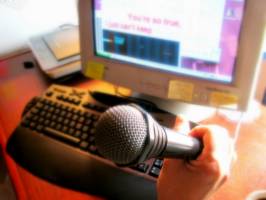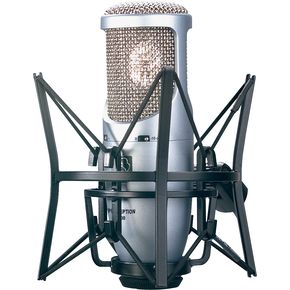


Live recording is done through what is called " audio" . That's an actual recording of a live sound, just like a tape recording. As mentioned earlier, your audio/midi sequencer program will also handle audio recording, so you can do everything in it. Alternatively, you may wish to pursue a standalone digital multitrack recording device. We will discuss both on this page, as well as other essentials for this phase.
 1. Get your digital multitrack recorder or software multitrack sequencer
1. Get your digital multitrack recorder or software multitrack sequencerSteps: Decide where you want to record your audio on your computer or a dedicated Multitrack Digital recorder. If you wish to use your computer's sequencer program, that's great and you'll save a lot of money. With a good quality audio interface, you can record at very high fidelity.
The downsides, though, are significant. As we all know, computers are not the most reliable pieces of equipment in the world. No, you're saying, mine NEVER crashes! Well, for you, the one person on earth who can say that, skip to the next paragraph! The rest of us don't enjoy losing lots of time and hard work when the computer freezes, as becomes more likely the more you demand CPU power for multiple tracks and adding things such as reverb and echo.
Further, mixing down on a computer with a mouse is not very convenient or effective. It can be done, and for simple 4 to 8 track projects, you'll do fine. You can purchase hardware control surfaces, which are basically mixers which run your software with faders.
Using an external multitrack recorder has many advantages. They are reliable, easier to mix with because they have those old familiar faders, and generally are of higher sound quality. They also come with internal effects such as reverb, delay, chorus, and so forth things which often crash computers if done internally. They can cost more, and have limited number of tracks (usually 8 to 24).
Once you've analyzed your needs, go and get the home recording studio recorder multitrack program, or standalone recorder you wish to work with. If you are using a software audio recorder, you may wish to consider an controller board which will give you real faders for mixdown, instead of having to do it with a mouse.
 2. Get your Microphone.
2. Get your Microphone. Steps: Recognize that your standard windows microphone is not up to snuff. You will need a mic that will accurately record your music. Microphones are the most important feature, because their quality widely varies, and they are what you hear. The most famous and best budget microphone ever is the Shure SM58 Mic. I recall being in a studio and just for the heck of it switching from a thousand dollar Neumann to the Shure for a take, and choosing the Shure track. In your home recording studio, equipment like that can do all you need.
Microphones are not all the same. Here are the basic varieties to choose from:
Traditional mics use an XLR cable, whih every proper audio interface can connect to. Now, manufacturers are making their famous models with a USB connector. In practice, the microphone IS its own audio interface. There isn't much difference, though, so choose what's most convenient. Recording into digital multitracks usually won't be a problem, as they are made for all mics.
Another consideration is what's called " Phantom Power." More quality condenser mics require some small current to make them work. This feature is not on dynamics, so you'll be safe regarding that. Most digital multitrack recorders have a phantom power switch on the mic inputs, so condensers will work fine with them. For your computer recording, the pre-amp should give phantom power.
Home Recording Studio MicrophonesBudget: SM58-LS Mic
|
 3. Get your audio interface recording sound card
3. Get your audio interface recording sound cardSteps: Get a high quality audio interface. Some of the factors to look for are types of input, quality and connectivity. Get one with MIDI, and enough mic inputs and line inputs for your expected usage. Repeat, get a GOOD audio interface.
Digital is different from analog Analog is for our purposes actual sounds, while digital translates the sounds into numbers. When you sing, you will need to translate your analog signal (the singing coming into the microphone) into digital data, so your computer can record it. Thus, your audio interface does that translation. You want it to be able to do so at least at 16 bit, 44.1 Khz, which is the standard for CDs. Nowadays, most quality cards offer 24bit/96khz, so why not?
If you've used a digital multitrack, you should know the advantage of digital is that it doesn't lose quality when copied digitally to another device. Your digital multitrack can probably send it's music out digitally, so you'll do best to have an interface that can accept digital data as well. The standard formats are called " spdif" , and come in two flavors, requiring two different types of cables: optical (spdif/o) and electronic (spdif/e). Make sure your multitrack and sound card use the same flavor and can connect.
Steps: Make sure your backing tracks are synchronized to the device you will be recording your vocals to, because you will need them to play together when you mix, and you need to hear them to record with.
If you are using the computer program, this is usually automatic, but if you are using a multitrack with a computer, you may need to tweak your synchronization a bit. That usually entails connecting the computer and multitrack via a MIDI cable and then specifying on each (the program and the multitrack) which sync signal (MMC, MTC, SMPTE) is sent/received, the frame rate, which device is the master (the one that when you press play on it, the other plays as well), and whether pressing play on the master starts playback at the beginning or at the song position of the master (what you want).
A limiting workaround to synchronization is simply to record all your tracks as audio onto the multitrack, and then you don't need to use the computer until mastering. If you lack enough tracks, you can do a premix of the band onto fewer tracks (e.g. drums and bass, choir, stereo guitars). The drawback here, it that you can't make changes in that sub-mix afterward, but at least you've got the ability to proceed.
For recording you must listen to the backing tracks through Speakers won't help you here, because the sound will be picked up by the mike and it will muddy your vocal.
So here's a synopsis of what we can do now:
Alright, you've recorded it all by now. Onward to Three in creating your home recording studio: Equipment for mixing down your songs.